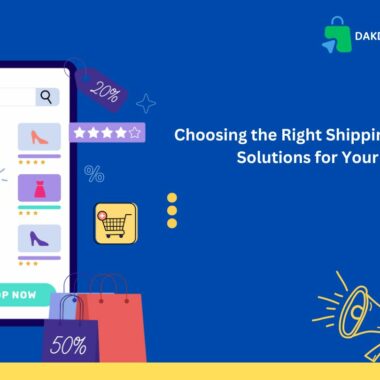Exploring the Benefits of Multichannel Selling for eCommerce
In today’s fast-paced digital landscape, where consumers have more choices than ever before, eCommerce businesses must adapt and innovate to stay ahead of the competition. One powerful strategy that has gained significant traction is multichannel selling. If you’re not yet familiar with this approach or are looking to understand how it can benefit your online store, you’ve come to the right place. At Dakdoom.com, we believe in harnessing the full potential of multichannel selling to elevate your eCommerce business. Let’s dive into the myriad advantages of this strategy.

What is Multichannel Selling?
Multichannel selling involves listing and selling your products across multiple platforms, both online and offline. This could include your own website, popular online marketplaces like Amazon and eBay, social media platforms like Facebook and Instagram, and even physical retail stores. The goal is to reach your customers wherever they are most likely to shop.
Key Benefits of Multichannel Selling
**1. Increased Visibility and Reach
When you sell on multiple platforms, you significantly increase your store’s visibility. Each channel exposes your products to a new audience segment. For instance, while your website might attract customers who prefer shopping directly from the brand, platforms like Amazon or Etsy tap into their vast user base, potentially driving more traffic and sales.
**2. Enhanced Customer Experience
Multichannel selling caters to different shopping preferences and habits. Some customers may prefer browsing and buying on social media, while others might opt for a more traditional online marketplace. By providing multiple purchasing options, you enhance the overall customer experience, making it easier for them to buy from you.
**3. Increased Sales Opportunities
More channels mean more opportunities to make a sale. Each platform you list your products on can generate additional revenue streams. For example, a customer who finds your product on eBay might not have discovered it on your website alone. By diversifying your sales channels, you maximize your potential for sales.
**4. Improved Brand Recognition
Being present on multiple platforms helps build and reinforce your brand’s presence. Consistent branding across different channels can increase brand recognition and trust among consumers. When your brand is visible and accessible through various touchpoints, it’s easier for customers to remember and choose you.
**5. Risk Mitigation
Relying on a single sales channel can be risky. If one platform experiences issues or changes its policies, it could negatively impact your sales. By diversifying your channels, you spread the risk and ensure that your business isn’t overly dependent on any single source of revenue.
**6. Better Customer Insights
Each sales channel provides valuable data about your customers and their purchasing behaviors. By analyzing this data, you can gain insights into which channels are most effective, what types of products perform well on each platform, and how to tailor your marketing strategies to better meet your customers’ needs.
**7. Flexibility and Adaptability
Multichannel selling allows you to adapt to changes in consumer behavior and market trends more effectively. If one channel sees a decline in traffic or sales, you can adjust your focus and resources to other more profitable channels. This flexibility helps ensure your business remains resilient in a constantly evolving market.
Implementing a Multichannel Strategy
To successfully implement a multichannel selling strategy, consider the following tips:
- Choose the Right Channels: Identify the platforms where your target audience is most active and where your products are most likely to succeed.
- Maintain Consistent Branding: Ensure your branding, messaging, and customer experience are consistent across all channels to build trust and recognition.
- Integrate Inventory Management: Use tools and software that integrate inventory management across channels to avoid overselling or stockouts.
- Monitor and Analyze Performance: Regularly track and analyze the performance of each channel to optimize your strategy and allocate resources effectively.
Conclusion
Multichannel selling is not just a trend but a strategic approach that offers numerous benefits for eCommerce businesses. By increasing visibility, enhancing customer experience, and mitigating risks, you can position your business for sustained growth and success. At Dakdoom.com, we’re committed to helping you navigate the complexities of eCommerce and leverage the power of multichannel selling to achieve your business goals.
Ready to take your eCommerce business to the next level? Explore our resources and solutions at Dakdoom.com to learn how we can support your multichannel selling journey.











